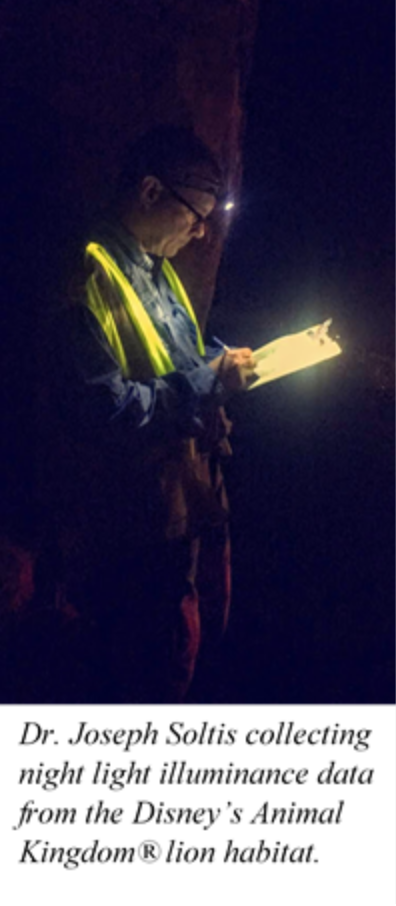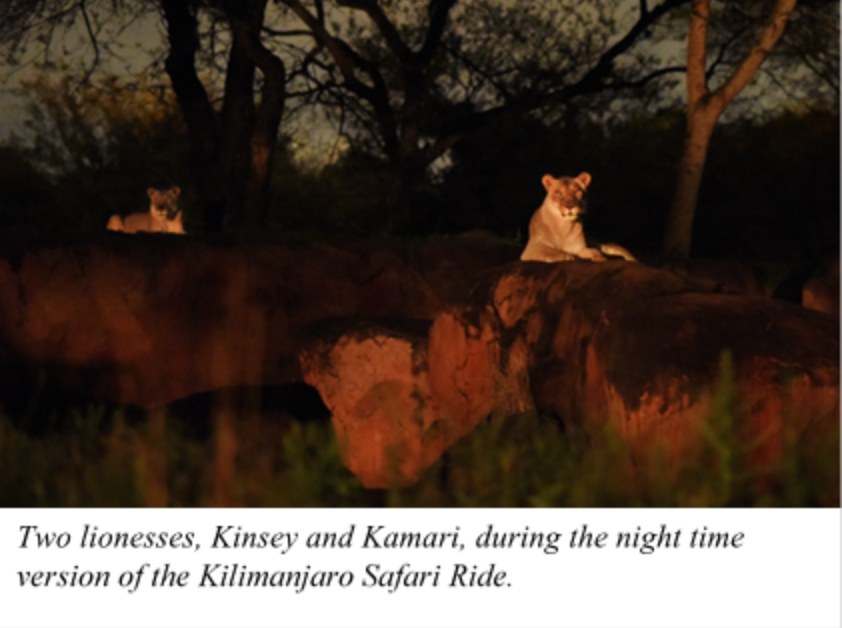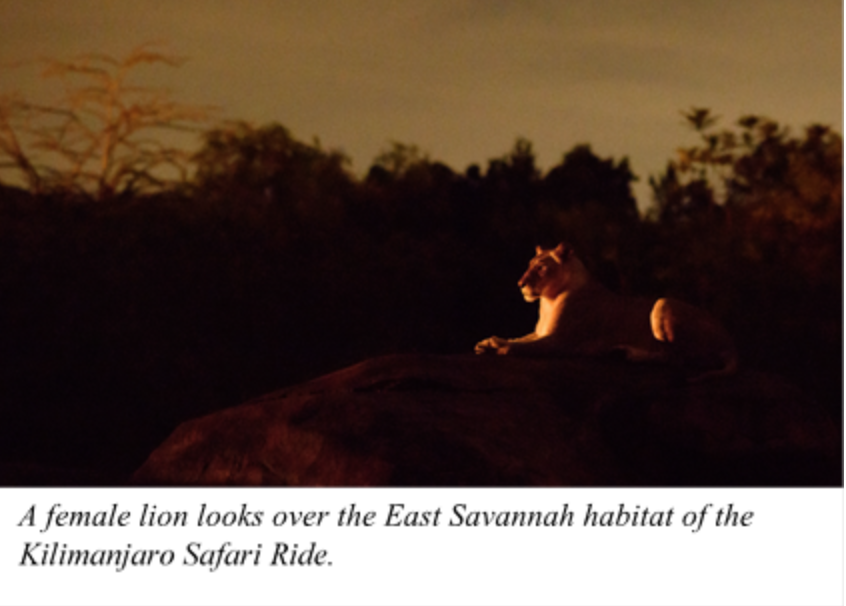By Michelle Herrera, University of California, Irvine
The lions and wildebeests rest peacefully during the night, lazily laying under the stars in the savannah. Then, from afar, there are stars near the ground that are slowly approaching. These are no ordinary stars. As the buzz of human whispers break from the stars, the stars reveal themselves as the lights from a safari ride caravan. The peaceful night at the savannah has a new visitor.
More and more zoos are starting to extend their hours by hosting special evening events, such as the nighttime Kilimanjaro Safari Ride at Disney’s Animal Kingdom®. While these night events are fun entertainment for people, it is important to ensure that the lights and sounds are also compatible with the daily lives of the animals. Dr. Joseph Soltis and Ms. Michelle Wood, of Disney’s Animal Kingdom®, are breaking down how night light affects animals at the zoo.
Dr. Joseph Soltis and Ms. Wood’s passion for animal welfare is easily noticeable and reflected in their projects. Dr. Soltis began by studying how animals are affected by noise from factors such as the safari ride, entertainment shows, and construction at Disney’s Animal Kingdom®. His goal is to keep sound at levels that continue to promote great animal welfare. Diving into this project, he realized that it was necessary to study light at the zoo as well, which is when Ms. Wood, Research Associate of the Science Operations Team at Disney’s Animal Kingdom®, joined the project.

As animal researchers who are not physicists by training, they came across the challenge of learning the jargon of light. They learned how to interpret different features of light, such as wavelengths and lumens. Human and animal vision are very different, and they had to understand the properties of light to understand how it affects animals. Yet, they took on the challenge with an open mind and quickly learned. Now, they can converse easily with engineers, “Imagineers” (the creators behind Walt Disney Parks and Resorts), and visitors of the park. Successful communication and collaboration between all groups is necessary at Disney’s Animal Kingdom® and other zoos, especially in the development of big events or projects, to ensure events are safe and enjoyable for animals and humans.
When Dr. Soltis and Ms. Wood started the light project, they found that there are few standards for overnight light levels in animal areas at zoos. They researched the wavelengths of light animals would normally encounter in the wild, which, of course, is different for every species, and used it as their standards. To see how light affected animal behavior at Disney’s Animal Kingdom®, they mapped light intensity and animal density together to see if animals prefer lighter or darker areas in their habitats at night. They discovered that the areas were pretty dark to begin with, and animals did not favor a particular light intensity. Their goal is to maintain overall light intensities at night that are natural for dusk and night time, and to use longer-wavelength light, near the red and orange lights, to reduce disruption to the circadian rhythms of the animals.
The light program is embarking on a deeper investigation into how UV light affects the animals. Considering that many animal enclosures are supplemented with artificial light, especially animals that are housed indoors, such as reptiles, the researchers wanted to ask how UV light and wavelengths of artificial lights can impact animals in their habitats. Their goal is to create animal environments that emits the same amount of UV light animals would get in their natural habitat, while at the same time providing a gradient of UV light so animals could choose what kind of exposure they would like. Dr. Soltis and Ms. Wood’s findings are just the beginning and there are still more factors to study. They believe there could be other factors are at play that are affecting animal behavior, such as temperature and ground vibration. It is likely a suite of environmental factors – not just light – that influences animal behavior.
Through this project, Dr. Soltis and Ms. Wood wondered, could a set of best practices of light be implemented at all zoos and aquariums? The development of standardized best practices would ensure the best welfare for animals in managed care. These best practices would require researching the amount of light, including UV light, every species at zoos and aquariums would normally encounter in the wild, and matching it up to what light is emitted in animal habitats. Dr. Soltis and Ms. Wood hope “to inspire other zoos/aquariums to consider sensory environment factors (light, sound, temperature, etc.) when designing habitats and assessing overall animal welfare.”
However, achieving their goal required great communication between partners. Presenting at scientific conferences, such as SICB, is one way to build collaborations that could change standards for all zoos and aquariums in years to come. Also, communicating to zoo visitors is important, so Ms. Wood and Dr. Soltis speak with curious visitors when they are out working on the new changes in Disney’s Animal Kingdom®. Dr. Soltis and Ms. Wood have an optimistic view on the response to the new changes, saying they are, “trying to make sure guests enjoy Disney’s Animal Kingdom® and know that we are working every day to create the best lives for animals in our care.”

Ms. Wood and Dr. Soltis are continuing to use new technology and study the animals in managed care to ensure they receive the best possible care. By studying how animals are affected by the light humans are emitting, they are ensuring that both animals and humans are having good experiences at zoos. Dr. Soltis and Ms. Wood say that “All of the work we do is driven by our desire to make sure our animals have excellent welfare.” They hope that their work can inspire collaboration with other scientists to consider sensory environment factors, such as light, when designing the beautiful habitats at zoos and assessing animal welfare.


